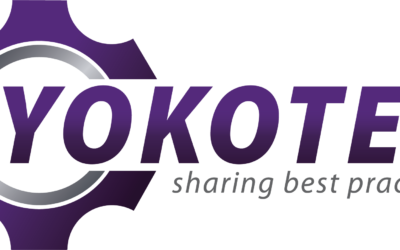Do you have a Burning Platform at work !
How to improve your Business Cash-Flow? A Brief Guide based on: “A Lean Accounting Approach to Managing your business during a Crisis”.
One of many lessons I re-learnt at Toyota during the 2008-2009 financial crisis was simply this : “Cash is King”.

Whilst GM, Ford, Chrysler and other automotive giants were going into bankruptcy, filing for Chapter 11, I was amazed how Toyota was not letting people go. The truth is, whilst other automotive companies were laying employees off, we were not only keeping our employees but actually increasing the training and development especially the Shop floor team leaders (TL) and group leaders (GL). The reasons why we were providing even more training, during a period of crisis, I will address in another article, along with an article on the “Loneliness of the long distance leader”. This particular article is focused on providing an overview of the key Lean Management Accounting Practices (LAP) you should consider during this COVID – 19 pandemic crisis.
The subject of LMAP is directly linked, both operationally as well as strategically, to lean management, lean manufacturing, lean logistics and administration and lean sales and marketing. In-fact, any company that has been engaged in demonstrating True North Leadership in running their business along these principles, is simply in a much stronger position than its competitors to weather this storm.
This storm will test the foundations upon which we have built not only our business but also our ability to lead ourselves and others.
Below, I have tried to provide an overview of key areas we should be addressing now and in the future if we are to improve the cash-flow of our business. I have not engaged myself in any great depth in discussing the doctrine of the principles of Lean Management Accounting Practices. This article is a synopsis of the foundations of LMA.
Your Chief Accountant or Finance Director.

During the period when I was a FELLOW member of the ACCA, not once do I recall anyone address the question of the source of unnecessary costs. The concept of wasted processes or behaviours, which have a significant effect on, OPEX, OEE, SMED, Process times, Quality and finally EBITDA, is generally accepted in most businesses as not a subject for finance people. Cost from a traditional financial management accounting perspective is an invoice.
Cost for a Lean Accountant is a process or behaviour which creates an unnecessary burden, such as the cycle time between order and getting paid and impacts on the financial statements. If you come across a person with a financial background that also practices lean tools and leadership behaviours you are looking at a very rare species and an invaluable resource in your business.
This is what I recommend you expect from your “traditional” accounting team. I have not listed all my expectations as this is not a consulting/advisory article but a guide of the key areas you should be addressing right now.
Provide monthly financial statements and associated documents with analysis, for the last 12 months (02/2019 – 02/2020) which demonstrate full transparency and answers to the following questions;
What is my M1 profit?. On which products and clients am I making money and getting paid for it!

- Sales per month divided by clients into three groups. Use Pareto for the analysis.
- Sales minus variable costs (raw materials, cost of direct labour – TKW) showing the profitability of all orders after direct variable costs have been deducted.
a. This will show you the profit margin, I call this M1, the first contribution.
b. The figure should be in your local currency as well as a % of your sales.
c. You should have an M1 of between 15% and 70%, depending on the business you are in. - Calculate the unit cost of producing one item, or one batch, or one litre or one kilogram, or one ton or one standard order. Including materials, this will also include the number of Direct labour hours spent by the business to provide this service or manufacture or build this one unit, whatever that unit is for you.
- Show this unit cost per key SKU’s (indexes) through Pareto and relate this to your clients.
- You need to know where your M1 is with respect to product (SKU) and with which clients.
- Many clients of mine have since discovered that by, following detailed analysis and discussions, cutting back on 20% of clients or types of orders, have lead to an increase in profitability.
- Yes, by “reducing the sales, increases the company profits”. Are you producing and selling so called “loss leaders”, which I understand as products which are made with a very small margin and in many cases even at a loss!.
- If so, when was the last time you dived into fact finding analysis.
- Are you also sure that you need to make these loss making parts.
- Are the reasons still justified for doing so!.
- You will really be surprised that over 80% of your loss-leaders, if never produced will not negatively effect the business.
- In fact, in the revers, loss-leaders will make a positive impact on your profitability if you stop producing them.
End of Part 1.
My next article, Part II, will continue with Variable costs, Fixed Costs as well as key parts of the Balance Sheet, especially your Working Capital.
This article has been produced with the support of the Lean Leadership Way Institute, llw-institute.com within the YOKOTEN principles of sharing best practices.
If you have found this article valuable, please let us know.
Mark Forkun
Right now, we cannot visit our clients and Genba, “Go and See” and advise. What we can do instead is use the internet for online solutions to “listen and advise”. Please give us a call or attend one our or Leadership Forums.



